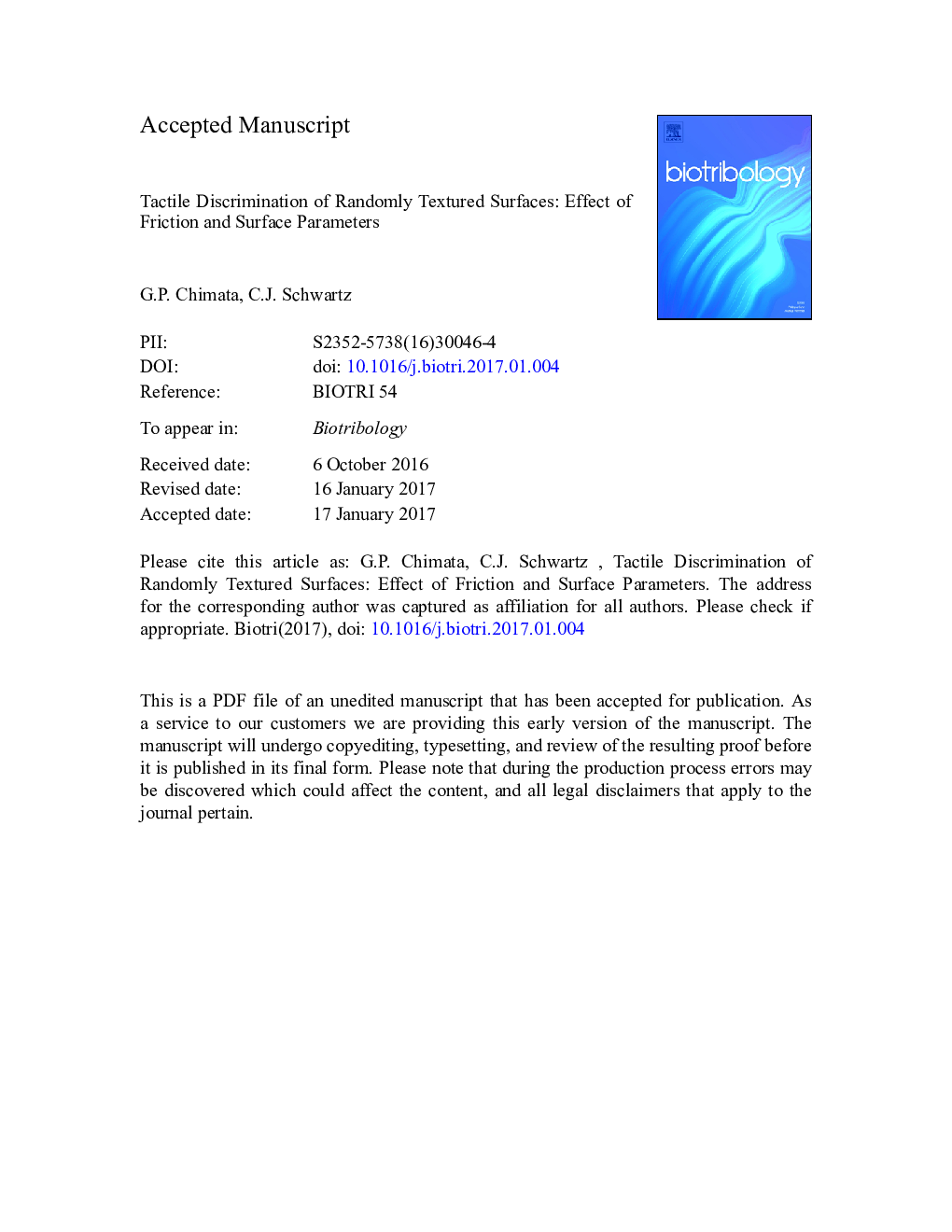| Article ID | Journal | Published Year | Pages | File Type |
|---|---|---|---|---|
| 5011133 | Biotribology | 2017 | 32 Pages |
Abstract
The aim of the current study is to identify the physical factors that could potentially be indicative of the tactile discriminability of textured surfaces. To this end, the tactile discrimination sensitivity for fine randomly textured surfaces was evaluated and its relation to the surface parameters and the coefficient of friction was investigated. Discrimination tasks were performed using a two-interval forced choice technique and the mean probability of perceiving a difference was measured for pairwise combinations of six fine-grit abrasive papers. The surface roughness parameters of the abrasive papers were measured using a contact profilometer and scanning electron microscopy images helped observe the surface microstructure. The coefficient of friction for each of the abrasive papers against human finger was measured for two sliding orientation of the finger: an 'aligned' orientation along the length of the finger and a 'transverse' orientation perpendicular to the length of the finger. Possible cases of theoretical probabilities of perceiving a difference for a given pair of tactile samples were proposed and the experimental probabilities were discussed within this context. Based on the evidence in existing literature, three measurable properties were chosen to investigate possible correlation with the mean discrimination probability: root mean square roughness, mean spacing of the profile peaks, and the mean coefficient of friction. Experimental evidence suggests that of the three parameters investigated, differences in the mean spacing and the mean friction coefficients were more indicative of the probability of perceiving difference between a pair of fine textured samples.
Related Topics
Physical Sciences and Engineering
Engineering
Biomedical Engineering
Authors
G.P. Chimata, C.J. Schwartz,
